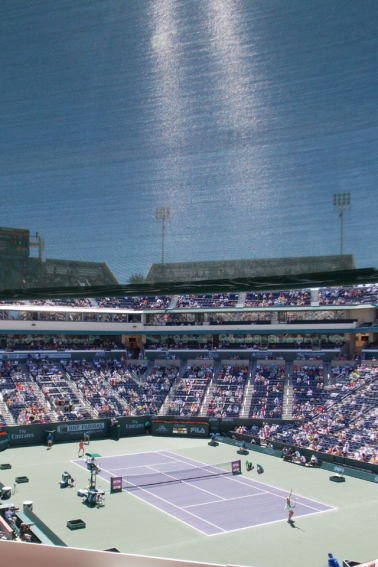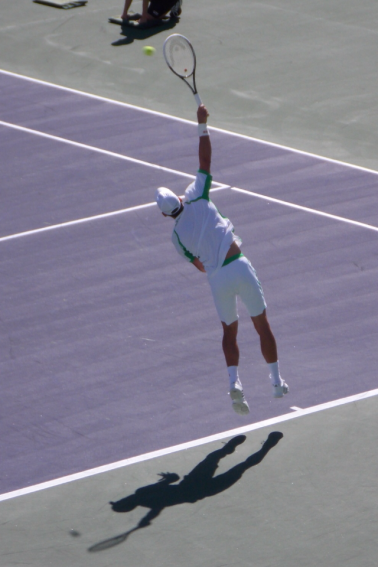Larry Ellison (Oracle Corporation) gave the green light to Ray Moore, ‘increase the prize money for our event.’ Their event the BNP Paribas Masters 1000 in Indian Wells, California would’ve upped the prize money for all Master 1000 events to follow. They were in uncharted territory.
But to do so Ray Moore had to appeal to the governing body of the sport, the Association of Tennis Professionals (ATP), whose Board is comprised of three tournament directors, three players and the Executive Director.
As it would play out the three tournament directors decided NOT to accept the increase; the players voted to increase; and the Executive Director abstained from the vote (health reasons).
Motion declined.
Why?
Simple. The tournament directors were defending their turf. More money means having to go out on a ‘fund raising road show’ in search of new sponsors and additional money for their event to match Indian Wells. The Grand Slams (Australian, French, Wimbledon & US Open) have played this one ups-manship with one another for years. The Australian will increase their prize money, then next in line is the French who has to answer the increase or lose a notch, which means Wimbledon will follow; but Wimbledon is more prestigious so it will try and match then add even more to the pool; and by the end of the Grand Slam season the US Open will have to throw the biggest party of them all with the largest increase. Which means the Australian must open next year’s bid (total purse) even higher than the US Open did the prior year.
And the cycle continues. But it’s the Grand Slams. They have the world’s attention because all of the top players will always play their events. The have to, they are the career building events with the most exposure. So the cycle of success is guaranteed because with more money, all the top players, the best sponsors, television — worldwide television rights — now are added to the pot and the stakes can be raised.
But the tier below, the Master 1000 events are a different animal. They thrive on securing the best players, knowing that the players are obligated to play their events, but they don’t have the worldwide recognizability of the Grand Slams, and thus, less television revenue. It’s more of a region by region economic thing.
Then Larry Ellison steps in secures the rights to the Indian Wells event, builds a massive tournament (a third stadium will be added in 2014) that leads off the Masters 1000 series.
Indian Wells is, in essence, the Australian Open in the bidding pool.
The only difference is Larry Ellison is a billionaire and by adding a third stadium to this desert site, he will have matched what the US Open offers by 2014. In short, he’s surpassing our biggest event in the United States with bravado, or as our South American friends would say, jeuvos grandes.
Naturally the three tournament directors on the ATP Board need to protect their turf. They’ve legislated mandatory participation with their Masters 1000 event, so why should they want to compete on that scale. They can’t. Maybe China. Europe is in an economic crisis. Japan and the rest of Asia is struggling. South America is confronted with their own issues: Olympics & World Cup in Brazil alone will tap them out.
So it’s natural for the tournament directors to want to protect their turf.
But it’s myopic.
Our game must expand. We must create a supply of players, future stars who will slide comfortably into the shoes of those who will be leaving the game. Tennis needs new blood. Without it, it will wilt on the vine.
Invariably from all corners of the world we see players emerge out of the woodwork; some are developed through the patient diligent efforts of elite national training programs while other just appear.
That talent needs a place to develop. It needs a place to learn how to compete.
And that’s why the tournament directors on the ATP Board should’ve countered Larry Ellison’s bold increase (which, by the way was structured, to give the first four rounds more money than increasing the winner’s purse. In short, giving more to the early round losers to help them decrease expenses, and maybe increase a team member).
No, the tournament directors should’ve counter with ‘all right if you want to expand your purse, Larry, then we want you to expand the minor leagues of professional tennis, the Futures events.’
Find a metric. Tweak a formula. Measure it in a petri dish. But don’t lose a golden chance to expand the game. Forget about protecting turf. Think more about getting new blood into the ranks.
Because we all know the dirty little secret in professional tennis: the more money a player makes the more he can invest in his team: coach, physical coach, hitting partner, trainer, dietician, sports psychologist, or shaman (Think Nole). Whoever. While the lesser player must fight his way to the top.
Don’t get me wrong I’m not a redistributionist. Earn it. And when you earn it long enough you’ll surround yourself with the people and things which bring about more success.
What I am for is expanding more places for players to play. More tournaments where a player can hone his skill, gain more experience and eventually earn more points.
The problem for the tournament directors is a simple one: rust never sleeps, and current stars will become old injured warriors. The list is long: Federer at 31. Nadal absent for seven months due to injury at 27 in June.
But the world is full of talent that needs to school it’s talent, harness it, shape it, perfect someplace. And when you don’t qualify for the larger tiered events, and their are no smaller tiered events to play that week, then they idle talent will sit.
After all a players career, no matter when they start in the sport, is, on average, seven years.
Go ahead, bargain with Larry. Do a deal. If he really wants to inflate the game, then make it count.


